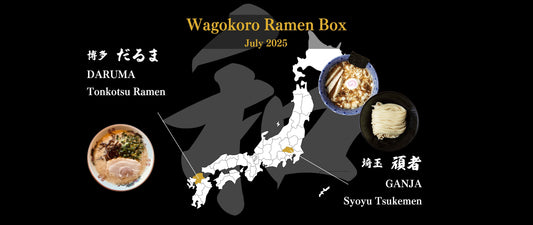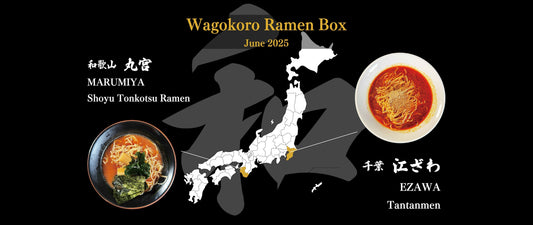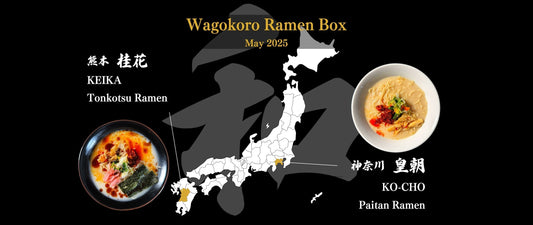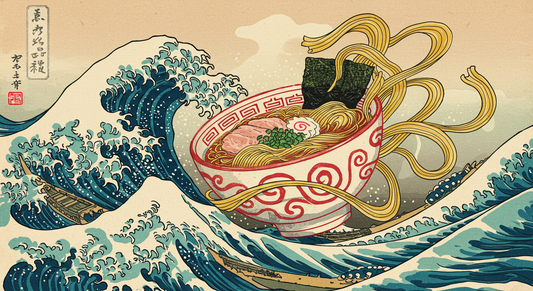The History and Appeal of Japanese Ramen Culture
Japanese ramen originated in post-war Japan as an affordable, filling meal that quickly evolved into a culinary art form. Over time, regional specialties like Sapporo Ramen, Hakata Ramen, and Kitakata Ramen emerged, each boasting unique broths, noodles, and toppings.
In traditional Japanese ramen shops, master chefs prepare each bowl with meticulous attention, using slow-cooked pork bone broth, soy sauce-based or miso broths, and hand-made noodles that vary in thickness and texture. This attention to detail has cemented Japanese ramen as not only a meal but an experience—a true expression of craftsmanship and cultural heritage.
Today, search terms like “Authentic Ramen Recipes” and “Homemade Ramen Broth” are trending, as more home cooks look to recreate these time-honored flavors in their own kitchens.
The Ramen Boom in America: Tradition Meets Innovation
Since the 1990s, America has witnessed a surge in interest in Japanese cuisine. Initially, instant ramen became popular for its convenience, with brands such as Maruchan and Nissin dominating supermarket shelves at prices as low as $0.25 to $1.00 per packet. Over time, however, American consumers began seeking out more authentic ramen experiences.
In major cities across the United States, a wave of dedicated ramen shops opened their doors, offering bowls that ranged from classic Tonkotsu Ramen to creative, fusion-style interpretations like Vegan Ramen and Gluten-Free Ramen. Many of these establishments emphasize fast-casual dining and efficient take-out or delivery options, catering to the busy lifestyles of American foodies.
Keywords such as “Best Ramen Restaurants” and “Ramen Delivery” are now frequently searched by those eager to explore both traditional and modern takes on ramen.
Differences in Flavor: Soup, Noodles, and Toppings
One of the most fascinating aspects of comparing Japanese and American ramen cultures lies in the differences in ingredients and preparation techniques.
Soup Innovations
In Japan, the broth is the heart of any ramen dish. Traditional methods involve long hours of simmering pork bones, chicken carcasses, or seafood to create deep, layered flavors. In contrast, many American ramen chefs experiment with shorter cooking times and incorporate local spices, herbs, and even unconventional ingredients to put a modern twist on the classic Japanese Ramen flavor profile. As a result, you may find a bowl of Spicy Ramen or an herb-infused broth that speaks to both tradition and innovation.
Noodle Varieties
Japanese ramen noodles are celebrated for their regional variations—ranging from thin, curly noodles to thick, chewy strands that perfectly complement their respective broths. While many American ramen restaurants strive to replicate these textures, some also experiment by blending noodle traditions. Hybrid noodles that borrow characteristics from soba or udon are becoming more common, offering a novel twist that appeals to adventurous eaters searching for “Unique Ramen Recipes.”
Toppings and Presentation
In Japan, the focus is often on simplicity, allowing high-quality ingredients like a perfectly marinated ramen egg or tender slices of chashu pork to shine. Meanwhile, American ramen shops tend to incorporate bolder, more visually striking toppings designed to appeal to social media trends. Terms like “Instagrammable Ramen” and “Ramen Toppings” are popular search keywords as diners look for both flavor and visual appeal when choosing their next meal.
Restaurant Culture and Dining Styles
The dining experience is another key area where Japanese and American ramen cultures diverge significantly.
Traditional Japanese Dining
In Japan, ramen is usually enjoyed in intimate, counter-style settings where customers can observe the chef’s artistry in crafting each bowl. This intimate setting enhances the overall dining experience, offering a glimpse into the time-honored techniques behind every carefully prepared dish. Traditional ramen shops maintain a serene, almost ritualistic ambiance, emphasizing quality and tradition.
The American Ramen Experience
In contrast, American ramen restaurants often adopt a fast-casual model. Diners can expect quick service with a modern, energetic atmosphere that caters to the fast-paced lifestyle of American urban centers. The emphasis on speed and convenience has given rise to popular options like Ramen Takeout and Ramen Delivery, which are integral parts of the current food culture. Additionally, many ramen spots in the U.S. offer a mix of traditional and experimental menus, enabling diners to explore a broad spectrum of flavors—from classic Tonkotsu Ramen to inventive Instant Ramen Hacks.
Future Prospects: The Fusion of Cultures
As global food trends continue to evolve, the boundaries between traditional and modern culinary practices blur—especially in the realm of ramen. The fusion of Japanese and American ramen cultures is likely to accelerate, driven by innovative chefs, cultural exchanges, and the power of social media.
For example, American pop-up ramen events and ramen festivals are increasingly featuring guest chefs from Japan, offering diners an authentic taste of Japanese Ramen while also embracing new, creative flavors tailored to American palates. The cross-pollination of ideas not only enriches the culinary scene but also sets the stage for future trends that could redefine what authentic ramen means in a global context.
Conclusion
The rich, multifaceted world of ramen is celebrated both in Japan and across America—albeit in distinctly different ways. In Japan, ramen is an art form rooted in tradition, with a focus on meticulous preparation and time-honored techniques. In the United States, ramen has evolved into a dynamic food trend that embraces both authenticity and innovation, appealing to diverse tastes and lifestyles.
Whether you are searching for “Japanese Ramen Recipes” to recreate an authentic bowl at home or looking for the “Best Ramen Restaurants” in your city, the ongoing dialogue between these two cultures continues to inspire and excite food lovers worldwide. The fusion of traditional techniques with modern creativity ensures that the future of ramen is as vibrant and diverse as its history.
Stay tuned to this Ramen Blog for more updates, reviews, and detailed guides on everything from Instant Ramen Hacks to exploring the nuances of Vegan Ramen and Gluten-Free Ramen options. Your journey into the world of ramen is only just beginning, and there is always a new bowl waiting to be discovered.






